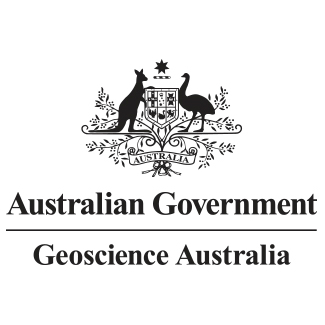Brief description
Data used to produce the predicted Alkalinity map for the Cadna-owie - Hooray Aquifer in the Hydrogeological Atlas of the Great Artesian Basin (Ransley et.al., 2015). There are four layers in the Cadna-owie - Hooray Aquifer Alkalinity map data A. Location of hydrochemistry samples (Point data, Shapefile) B. Predicted Concentration (Filled contours , Shapefile) C. Predicted Concentration Contours (Contours, Shapefile) D. Prediction Standard Error (Filled contours , Shapefile) The predicted values provide a regional based estimate and may be associated with considerable error. It is recommended that the predicted values are read together with the predicted error map, which provides an estimate of the absolute standard error associated with the predicted values at any point within the map. The predicted standard error map provides an absolute standard error associated with the predicted values at any point within the map. Please note this is not a relative error map and the concentration of a parameter needs to be considered when interpreting the map. Predicted standard error values are low where the concentration is low and there is a high density of samples. Predicted standard errors values can be high where the concentration is high and there is moderate variability between nearby samples or where there is a paucity of data. Concentrations are Alkalinity as CaCO3 mg/L. Coordinate system is Lambert conformal conic GDA 1994, with central meridian 134 degrees longitude, standard parallels at -18 and -36 degrees latitude. The Cadna-owie - Hooray Aquifer Alkalinity map is one of 14 hydrochemistry maps for the Cadna-owie - Hooray Aquifer and 24 hydrochemistry maps in the Hydrogeological Atlas of the Great Artesian Basin (Ransley et.al., 2014). This dataset and associated metadata can be obtained from www.ga.gov.au, using catalogue number 81692. References: Hitchon, B. and Brulotte, M. (1994): Culling criteria for 'standard' formation water analyses; Applied Geochemistry, v. 9, p. 637-645 Ransley, T., Radke, B., Feitz, A., Kellett, J., Owens, R., Bell, J. and Stewart, G., 2015. Hydrogeological Atlas of the Great Artesian Basin. Geoscience Australia. Canberra. [available from www.ga.gov.au using catalogue number 79790]Lineage
Maintenance and Update Frequency: notPlanned
Statement: SOURCE DATA:
Data was obtained from a variety of sources, as listed below:
1. Water quality data from the Queensland groundwater database, Department of Environment and Resource Management
2. Geological Society of Queensland water chemistry database (1970s to 1980s). Muller, PJ, Dale, NM (1985) Storage System for Groundwater Data Held by the Geological Survey of Queensland. GSQ Record 1985/47. Queensland.
3. Geoscience Australia GAB hydrochemistry dataset 1973-1997. Published in Radke BM, Ferguson J, Cresswell RG, Ransley TR and Habermehl MA (2000) Hydrochemistry and implied hydrodynamics of the Cadna-owie - Hooray Aquifer, Great Artesian Basin, Australia. Canberra, Bureau of Rural Sciences: xiv, 229p.
4. Feitz, A.J., Ransley, T.R., Dunsmore, R., Kuske, T.J., Hodgkinson, J., Preda, M., Spulak, R., Dixon, O. & Draper, J., 2014. Geoscience Australia and Geological Survey of Queensland Surat and Bowen Basins Groundwater Surveys Hydrochemistry Dataset (2009-2011). Geoscience Australia, Canberra Australia
5. Water quality data from the Office of Groundwater Impact Assessment, Department of Natural Resources and Mines, Queensland Government
6. Geoscience Australia (2010) Hydrogeochemical collection. A compilation of quality controlled groundwater data taken from well completion reports from QLD and NSW.
7. Water quality data from the Office of Groundwater Impact Assessment, Department of Natural Resources and Mines, Queensland Government
BOUNDARIES:
Data covers the extent of the Cadna-owie-Hooray Aquifer and Equivalents as defined in Great Artesian Basin - Cadna-owie-Hooray Aquifer and Equivalents - Thickness and Extent dataset (Available from www.ga.gov.au using catalogue number 81678)
METHOD:
Groundwater chemistry data was compiled from the data sources listed above. Data was imported into ESRI ArcGIS (ArcMap 10) as data point sets and used to create a predicted values surface using an ordinary kriging method within the Geostatistical Analyst extension. A log transform was applied to the Alkalinity, TDS, Na, SO4, Mg, Ca, K, F, Cl, Cl36 data prior to kriging. No transform was applied to the 13C, 18O, 2H, pH data prior to kriging. The geostatistical model was optimized using cross validation. The search neighbourhood was extended to a 1 degree radius, comprising of 4 sectors (N, S, E and W) with a minimum and maximum of 3 and 8 neighbours, respectively, per sector. The predicted values surface was exported to a vector format (Shapefile) and clipped to the aquifer boundaries.
Issued: 2015
text: westlimit=132.07; southlimit=-33.69; eastlimit=153.18; northlimit=-9.01
Subjects
Earth Sciences |
GIS Dataset |
NSW |
NT |
Published_External |
QLD |
Regional |
SA |
geoscientificInformation |
User Contributed Tags
Login to tag this record with meaningful keywords to make it easier to discover
Other Information
Download the data (shp)
Identifiers
- URI : pid.geoscience.gov.au/dataset/ga/81692

- global : fc3eec81-5e5f-6f5c-e044-00144fdd4fa6


